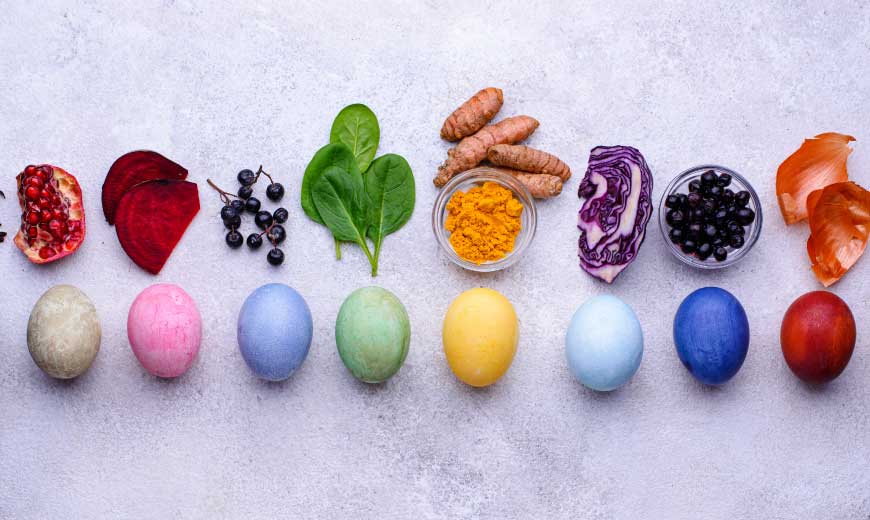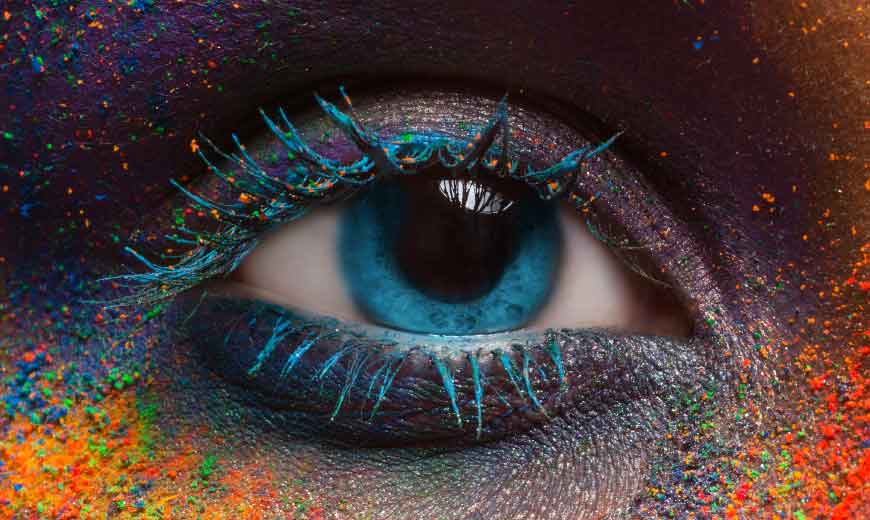Color is perceived by an impression generated by light in the human retina.
The human eye, and those of some animals, has photoreceptors called rods and cones, capable of measuring electromagnetic wavelengths that reflect light and communicate with the brain by means of nerve signals interpreted by the brain as color.
We are able to see thanks to two properties of light: reflection and absorption on objects. Cone photoreceptors are responsible for color vision, perceiving hue. They are divided into three types forming the primary colors:
- Sensitive to red light
- Sensitive to green light
- Sensitive to blue light
The amplitude of the light that defines the color, brightness, is called value. There are only two values: white is the maximum perceived value of light wave frequencies, fullness of color, and black is the minimum value, which is the total absence of light perceived by the human eye. They are used in the chromatic scale to lighten or darken colors.
Saturation in color corresponds to the intensity level of vividness with which we perceive a color.

Colors and their therapeutic meanings
According to philosophies such as Yoga or Ayurveda, colors are of vital importance. Since colors are known to come from sunlight, it is believed that through the use of colors vital energy or prana is incorporated into the body.
Similarly related to western science, in hospitals they have blue or green blankets, lots of white and soft colors. Since blue symbolizes healing, therapy itself, and white symbolizes peace, purity and tranquility.
In kinesiology and physiotherapy, the therapeutic bandaging technique called ‘taping’ has been used for several years and is effective in pain relief. It is applied to the skin and activated by movement.
Bandages are available in different colors in order to allow for variation in therapy. Their selection is based on following the criteria of chromotherapy: warm colors concentrate the temperature and cold colors disperse it.
- Acute injuries: in case of edema or inflammatory conditions, it is advisable to use cold colors.
- Chronic injuries: in cases of poor blood circulation or conditions requiring heat, the use of warm colors is recommended.
- In cases where the person’s psychology is altered, it is advisable to use green, orange and white colors.

Color in food
The color of food tells us about its appearance and reveals information about its essence, what nutrients they provide and what vital parts of the body they benefit. They are both appealing and nourishing.
What do they stand for?
According to the criteria of chromotherapy and Ayurvedic medicine, we can classify and associate food colors with their benefits.
- Orange: pigments granted by beta-carotenes and other carotenes. They are associated with skin and eyesight benefits, as well as boosting of the immune system. It embodies energy and creativity.
- Yellow: These foods promote cell regeneration, regenerative bodily functions, and are anti-allergic. Flavus means yellow in Latin, and flavonoids are pigments that transmit this color. It represents power, freedom and joy.
- Green: It represents plants and vegetables due to chlorophyll. It is associated with the release of serotonin, a natural hormone that generates well-being in humans. Green foods are associated with healing, stress release and detoxifying effects. It symbolizes compassion and cleanliness.
- Red: is a warm, hot color that promotes activity. Red foods are associated with optimism and vitality. Pigments such as lycopene or anthocyanins grant fruits and vegetables this color. Its benefits are associated with a healthy circulatory system, good digestion (red is a healthy digestive fire). It represents survival and instinct.
- Blue: Blue and purple fruits and vegetables have anticarcinogenic properties. Their color comes from pigmented phytonutrients. They are associated with boosting the body’s defenses and protection due to the vitamins they provide. It stands for communication and speech.

Colors in the animal and plant world
When it comes to colors in nature, flowers are experts in the art of color. Colors are an advantage, a virtue in the animal and plant world, one of the typical examples is pollination, where color plays a key role in attracting bees to the flowers.
Not all animals have full vision to all colors, some see in black and white. But colors in animals also work. For some, like the chameleon, it is a means of defense against predators, and others interpret information about the food they are able to eat.









